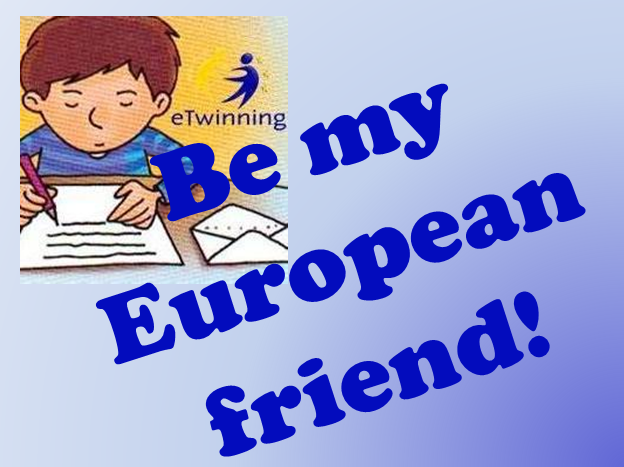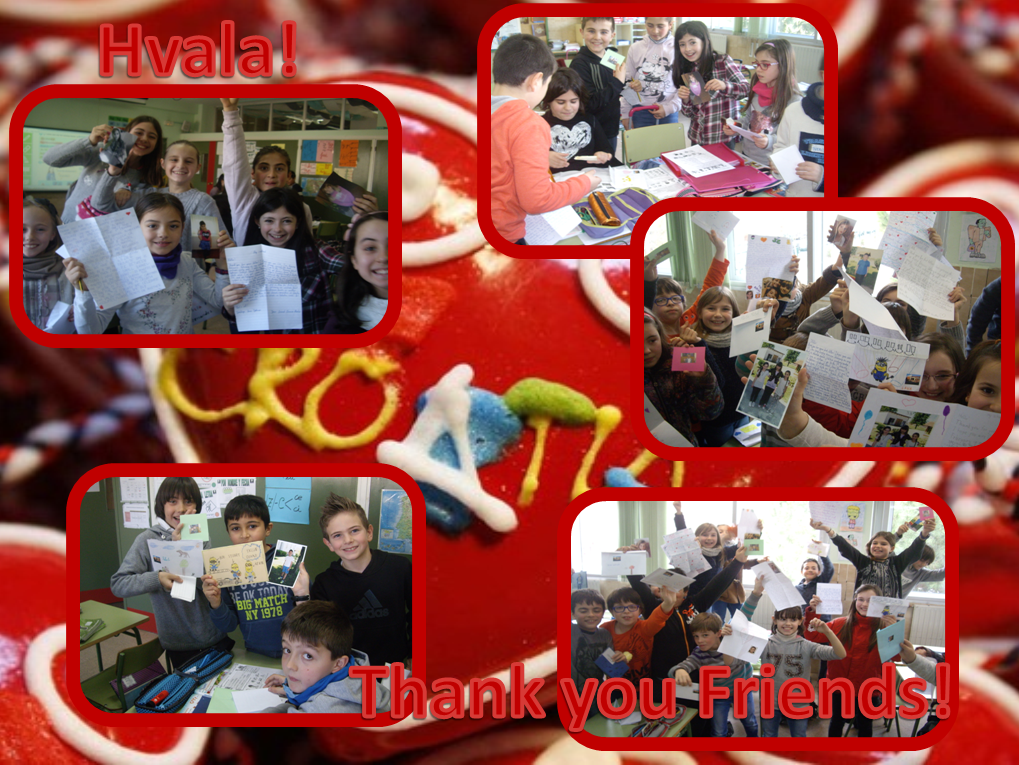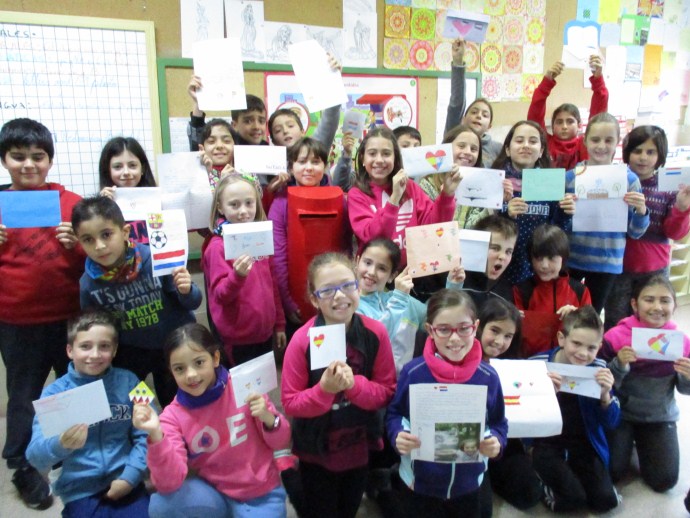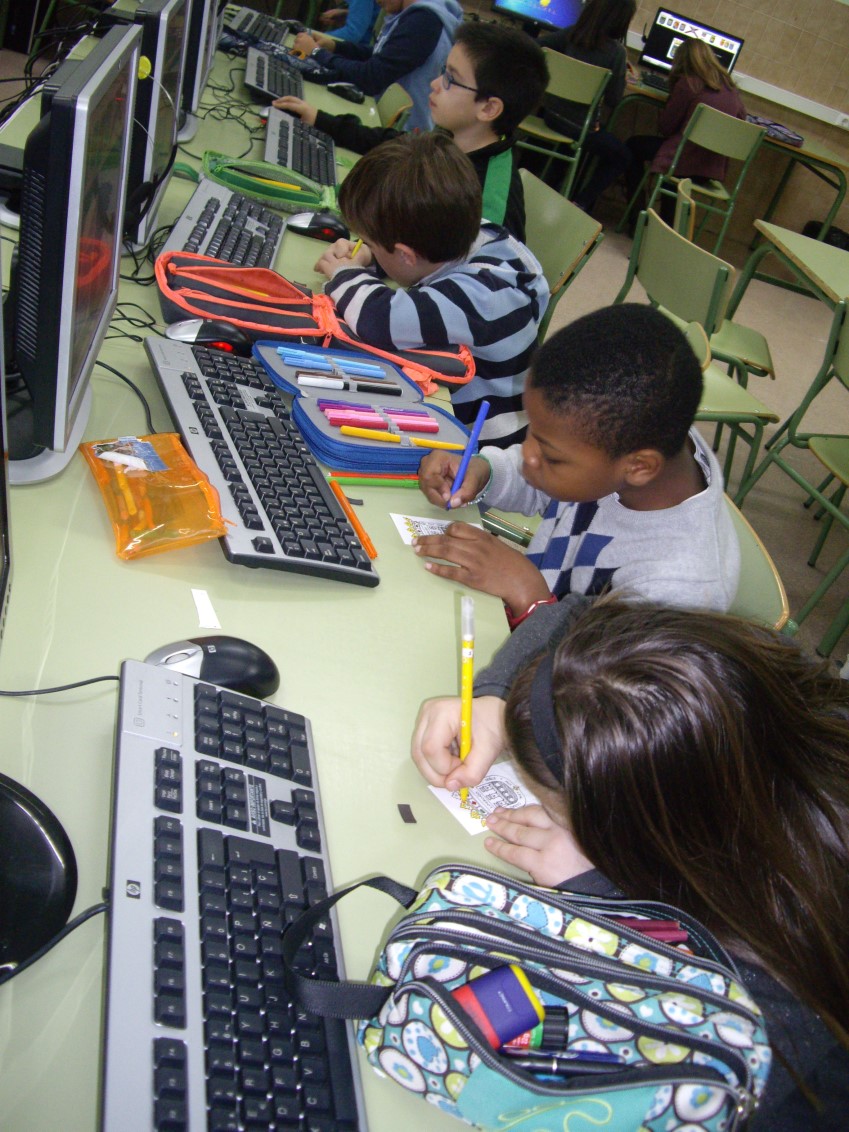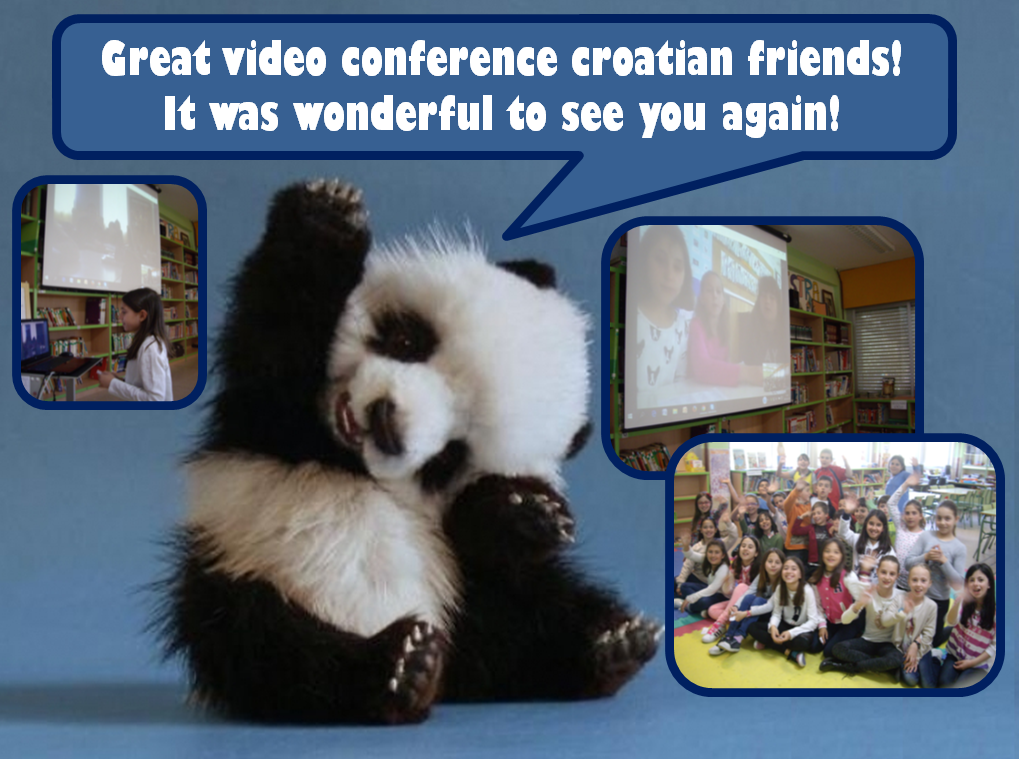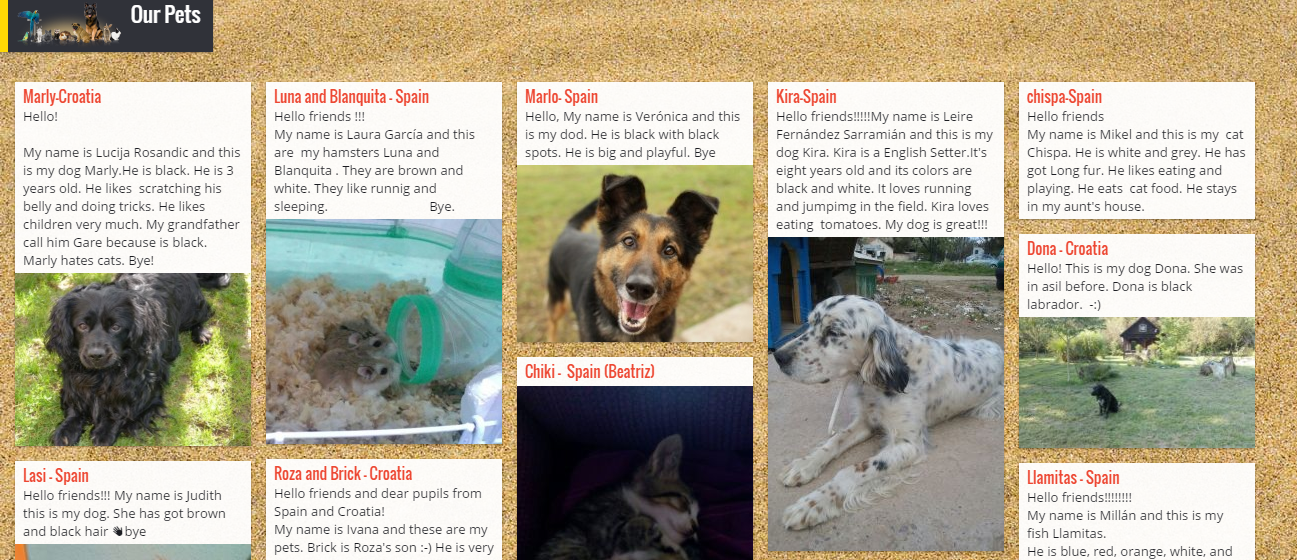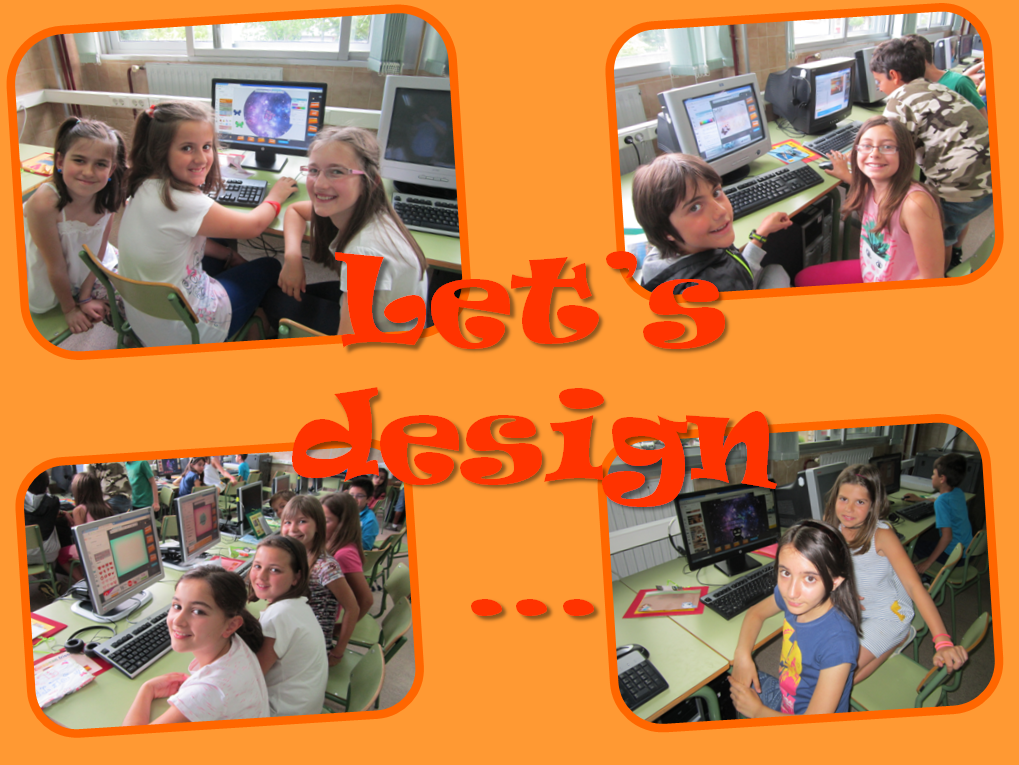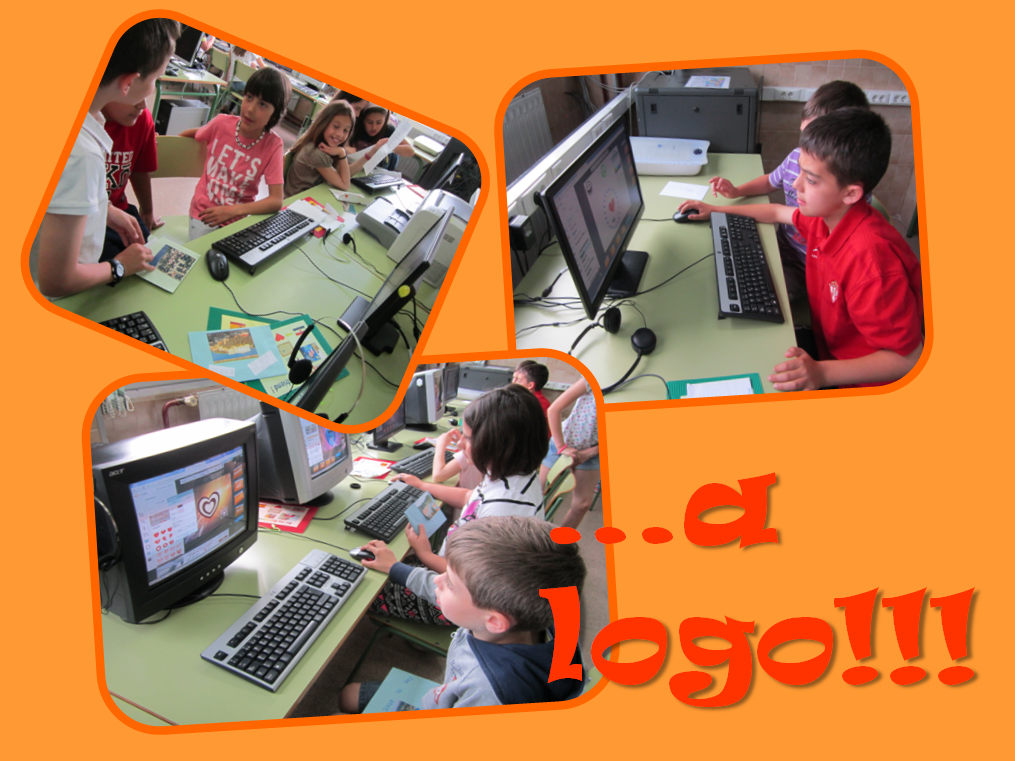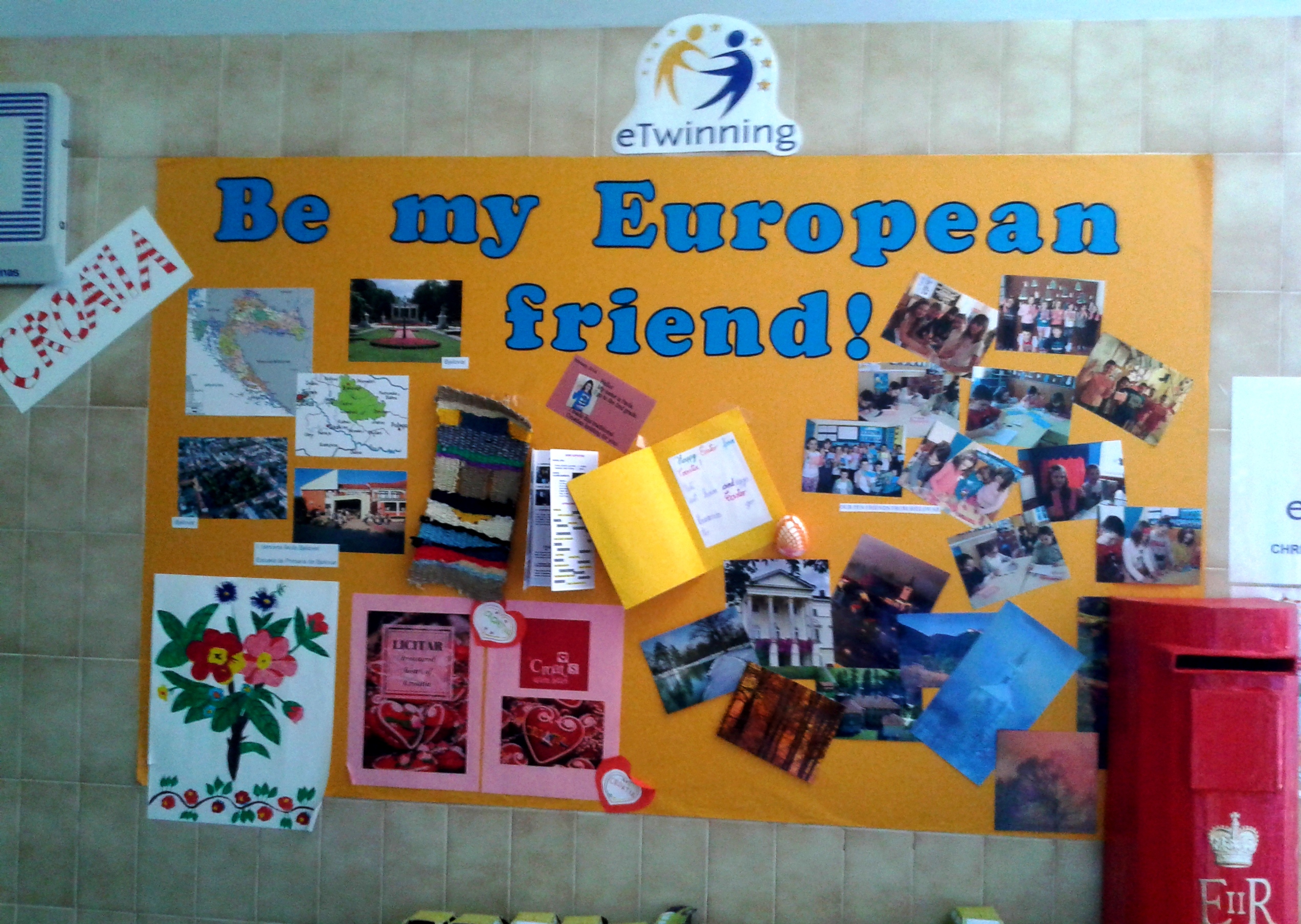This is my eTwinning project plan
PROJECT DECRIPTION
PEDAGOGICAL INNOVATION
AND CREATIVITY
The purpose of this project was to improve our
teaching-learning processes and habits in the area of foreign language. We set
out to reorganize the whole process: content, student learning and our own
teaching practice. Our ultimate goal was to connect this process with the
personal and socio-cultural reality that our students live in a common European
framework. Therefore, in our project we have used techniques and strategies to
collaborate at all levels, to communicate and to use information technologies.
We have collaborated in several areas:
- During the planning, development and implementation of
the teaching project we revised, corrected, and evaluated the process.
- In the educational interaction among the students within
their groups and with the groups from other countries. Our students collaborated in groups of
multiple sizes: large groups, small groups, as couples and individuals.
- In interaction with the educational community: families, centre,
teaching staff, etc. to carry out each of the topics we have worked on.
Student verbal communication has been enhanced through oral
expression and creative writing (from significant centres of interest),
videoconferences, talks and exhibitions of works; with its reference group, in their
centre and mainly with the collaborating group of the project.
Non-verbal communication has been exercised by the students
through artistic expression and activities including student drawings,
photographs, videos and artistic activities.
The use of information technologies has promoted
intrapersonal and interpersonal learning through 2.0 tools.
We believe that
this project has helped us to improve our teaching practice, positioning
ourselves as guides of the process and promoting in our students an integral
development of the English language.
CURRICULAR INTEGRATION
Our project has been integrated in several areas of the
primary curriculum, mainly in foreign language, social sciences, natural
sciences and art education.
In the area of foreign languages and vocabulary, syntactic
structures have been developed to write five letters drawn from different
contents: self-description and family, school, hobbies and tastes, cities,
countries, and the summer holidays, in the comprehension/expression oral and
written.
In
addition, the pupils’ oral skills have improved through their effort to express
their ideas in class and make additions to their classmates’ views. This
interaction has been really useful as it could easily be integrated in the
tasks suggested in their English books.
Other related areas:
Artistic area:
Different art activities related to the treated subject
have been
elaborated, using different techniques: trimming, folding, stamping,
braiding, painting, etc. fostering creativity and originality, since they were
a personal gift that was part of each individual letter.
Pertaining to musical and artistic expression, songs have
been prepared in groups and have been sung in the videoconferences. Both foreign and maternal languages were
utilized.
Areas of social and natural sciences:
Our students have executed tasks requiring knowledge,
research and design. The students
utilized written, graphic and digital materials to explore the population,
culture, traditions and customs of the European cities, the geography of Spain,
Croatia and Greece in general, and the endemic fauna of their countries, as
well as the dangers of the extinction of some species.
Likewise, our students have been able to know, learn and compare the population, culture, geography and fauna of our partner countries through exploration of the materials they sent to us.
Our students have
developed, through participation in this project, the skills of linguistic
communication, knowledge and interaction with the physical, civic, and social
world, information processing and digital competence, learning to learn, and
autonomy and personal initiative. Additionally, we should not underestimate the
impact the project had on our pupils’ interpersonal relations .For them each
letter or other sort of communication was also an opportunity to exchange small
gifts. Each time they tried to think of what would please their foreign friends
and sent them souvenirs that they will keep forever.
For our
pupils this project was probably the best way to discover the importance of the
English language in communication and its vital role in collecting knowledge of
the world and its peoples.
COMMUNICATION AND
EXCHANGE BETWEEN PARTNER SCHOOLS
From the beginning of the group formation, writing and
approval of the project "Be my European friend", all members had a
very clear idea that it was essential that common themes were established so
that our students had a frame of reference to carry out each of the activities,
and to build an understanding that we all formed a group in which we can all
learn.
 But this initial planning has evolved. After each letter we
have analysed the work completed and modifications have been introduced to
achieve the objectives set for each shipment.
But this initial planning has evolved. After each letter we
have analysed the work completed and modifications have been introduced to
achieve the objectives set for each shipment.
At the beginning of the month, the coordinators of the
group sent to all members the work plan that reflected the changes made and the
schedule of activities to be carried out, structures to work with and
suggestions for work.
This planning of topics has meant that our students had
previously worked on the topics on which the videoconferences would be based so
the practice of oral skills and cultural exchanges would be much more fruitful.
The teachers of the participating groups participated in preparatory
videoconferences in which they planned the activities that the students would
have to prepare.
In addition to
videoconferencing we have been able to work on diversity and communication
through Twinspace, and organization in pages and diaries. Through student video
development, presentations and other activities with the participating member
schools, we have been able to know and learn from other cultures, traditions
and customs, highlighting the similarities and differences between them. By
doing so we deepen and reinforce student learning.
COLLABORATION BETWEEN
PARTNER SCHOOLS.
Initially, all the members of the project
collaborated in the decision of the themes to work on the project.
Subsequently, we have maintained periodic contact and collaborated in the
realization of the introductory presentations of our cities and schools, uploading
photo montages about the shipments and other complementary activities on
Twinspace.
Twin-schools have collaborated preparing, on
the one hand, the communications for the rest of the group members with the
instructions to follow during each month. And, on the other, we have maintained
daily contact to inform us about the evolution of our activities and created padlets,
prepared videoconferences, games and activities of artistic expression (art and
musical).
The collaboration between our students has been
total and in several directions. First, each student has maintained monthly and
individual correspondence with his “penfriend” with whom he has shared
experiences, histories, culture, tastes, etc. through letters, drawings,
photos, art works and interviews. In turn, they have shared these experiences
with the large group in both countries, with presentations and padlets, videos
and videoconferences. And finally, our students have collaborated with students
from other schools that participated in this project, entering Twinspace and
the blog to know, compare and enjoy together each of the topics treated each
month (through different tools) .
The result
of this work in common has been very positive since the interaction has taken
place in different forms and with different groupings. In this way they have
been able to discover other countries, learn from other cultures and, above
all, communicate in multiple ways with their European friends, which have given
them an extra motivation to continue working on projects.
USE OF
TECHNOLOGY
Despite
being a project based on a traditional instrument such as the letter, the use
of technology and other tools 2.0. has played a key role in our project.
Our
students have carried out different activities of research, analysis,
collection and composition of written and graphic documents through the
internet to be able to write about the topics to be covered: geography,
culture, art, fauna, etc.
They have
collaborated in the creation of padlets, with their "penfriends",
about their pets and other subjects, being able to practice written skills in a
richer and more motivating way. They have illustrated their written
compositions with photographs that they uploaded and added themselves,
fostering personal taste and autonomy.
They have
participated in different videoconferences in which they have been able to
practice the oral skills through games, interviews, dialogues and songs related
to their interests and
the subjects treated. It has been very motivating for
them to be able to see, listen to their friends and check that they are able to
communicate in the English language, expressing themselves and actively
understanding.
We have
used a wide variety of 2.0 resources. Such as: thinglink, emaze, kizoa, imagechef,
kahoot, padlet, voki, glogster, issuu, prezi, smilebox, etc., to offer our
students a great variety of possibilities.
Videos have
been recorded about each of the topics that we have dealt with in the letters, created presentations and photo
montages to illustrate the different deliveries,
in small groups and in active
ways.
We have
always tried to work in safe environments and to avoid pages with ads.
Published comments have been made with password access, previously reviewed and
open to the public once finished.
We have tried to
use free and proper images and music for the elaboration of the different
materials - indicating the authorship when they were copyrighted.
RESULTS, IMPACT AND
DOCUMENTATION
Our participation in this project has meant
discovering a new channel of cultural and linguistic exchange with colleagues
from different countries. It has also enhanced learning and mutual
collaboration which has led to rapid improvement reflecting on our own work.
Our students’ participation has greatly
increased their motivation in this area and this has led to great improvement
in oral and written skills. In just five months we have succeeded in getting
our students to gain confidence and hence change their attitude from doing
guided letters in the beginning of the project to doing them in a practically
autonomous way in the rest of cases.
The most outstanding result of this activity
has been the motivation to use the English language as a means of communication
both oral and written, to interact with other students with similar interests
and motivations, to get to know the environment and the conditions they live in,
their thoughts, their culture and the
ir personal history. This motivation has resulted in a remarkable improvement of their skills and autonomy in developing communication strategies.
ir personal history. This motivation has resulted in a remarkable improvement of their skills and autonomy in developing communication strategies.
For our schools it has meant the beginning of
an open path to participate in international programs and to collaborate with
other European schools, since it was one of our first projects in eTwinning.
In addition to the evaluation that has been
carried out during the development of the project (analyzing the different activities, looking
at their suitability and possible improvements or modifications) the whole
project has been evaluated through two surveys conducted to teachers and
students.
We have shared our experience with the
educational community through different ways such as the "Project
Corner", exposing the works in common corridors, the creation of the
"eTwinning" section on the school website and, in particular, free
access to certain Twinspace pages so that the entire educational community
could observe the activities carried out; and, finally, the creation of a blog
to facilitate access to different contents.
Visit our project Twinspace:
